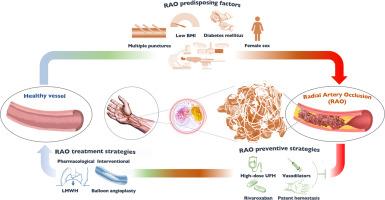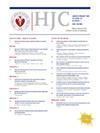Treatment of radial artery occlusion after transradial coronary catheterization: a review of the literature and proposed treatment algorithm
IF 3
3区 医学
Q2 CARDIAC & CARDIOVASCULAR SYSTEMS
引用次数: 0
Abstract
The transradial artery has been established as the default access site for most coronary catheterization procedures with fewer access-related and bleeding complications, rapid hemostasis, early ambulation of the patient, and reduction in all-cause mortality compared with transfemoral access. However, radial artery occlusion (RAO) remains the most frequent complication of coronary catheterization procedures performed via transradial artery access. The purpose of our review was to conduct detailed literature research and summarize all the available treatment strategies for RAO, given the lack of a standardized treatment protocol in the literature. Pharmacological treatment with low-molecular-weight heparin (LMWH) or other anticoagulants, invasive strategies, and pharmaco-invasive methods available in the literature were included in our review. Data were derived from case series, case reports, clinical trials, and observational studies. Eight studies regarding pharmacological treatment with LMWH or any other anticoagulant and seven studies of invasive treatment were included in our review. There were only two randomized studies: one with LMWH (tinzaparin) and one with apixaban. Furthermore, taking into consideration data derived from the above-mentioned studies, a treatment algorithm for RAO was proposed. RAO remains the most frequent complication of coronary procedures with transradial access. Application of preventive strategies and comprehensive knowledge of the risk factors remain the key factors for the reduction of the incidence of this clinical entity. Therapeutic options include anticoagulation regimens and interventional techniques through the distal radial artery. Large, randomized, multicenter studies should be conducted to evaluate the efficacy of the available treatment methods and define a standardized treatment protocol for RAO.

经桡动脉冠状动脉导管置管后桡动脉闭塞的治疗:文献综述及建议的治疗方法。
经桡动脉通路(TRA)已被确立为大多数冠状动脉导管手术的默认通路,与经股通道相比,其通路相关并发症和出血并发症较少,止血迅速,患者早期走动,全因死亡率降低。然而,桡动脉闭塞(RAO)仍然是TRA冠状动脉导管置入手术中最常见的并发症。鉴于文献中缺乏标准化的治疗方案,本综述的目的是进行详细的文献研究,总结所有可用的RAO治疗策略。我们回顾了文献中可用的低分子肝素(LMWH)或其他抗凝药物治疗、侵入性策略和药物侵入性方法。数据来源于病例系列、病例报告、临床试验和观察性研究。我们的综述包括8项关于低分子肝素或其他抗凝药物治疗的研究和7项关于侵入性治疗的研究。只有两项随机研究,一项使用低分子肝素(丁沙巴林),另一项使用阿哌沙班。在此基础上,结合上述研究数据,提出了一种RAO的处理算法。RAO仍然是冠状动脉手术中最常见的并发症。预防策略的应用和对危险因素的良好认识仍然是减少这种临床实体发生率的关键因素。治疗方案包括抗凝治疗方案和桡动脉远端介入技术。应该进行大型、随机、多中心的研究,以评估现有治疗方法的疗效,并确定RAO的标准化治疗方案。
本文章由计算机程序翻译,如有差异,请以英文原文为准。
求助全文
约1分钟内获得全文
求助全文
来源期刊

Hellenic Journal of Cardiology
CARDIAC & CARDIOVASCULAR SYSTEMS-
CiteScore
4.90
自引率
7.30%
发文量
86
审稿时长
56 days
期刊介绍:
The Hellenic Journal of Cardiology (International Edition, ISSN 1109-9666) is the official journal of the Hellenic Society of Cardiology and aims to publish high-quality articles on all aspects of cardiovascular medicine. A primary goal is to publish in each issue a number of original articles related to clinical and basic research. Many of these will be accompanied by invited editorial comments.
Hot topics, such as molecular cardiology, and innovative cardiac imaging and electrophysiological mapping techniques, will appear frequently in the journal in the form of invited expert articles or special reports. The Editorial Committee also attaches great importance to subjects related to continuing medical education, the implementation of guidelines and cost effectiveness in cardiology.
 求助内容:
求助内容: 应助结果提醒方式:
应助结果提醒方式:


